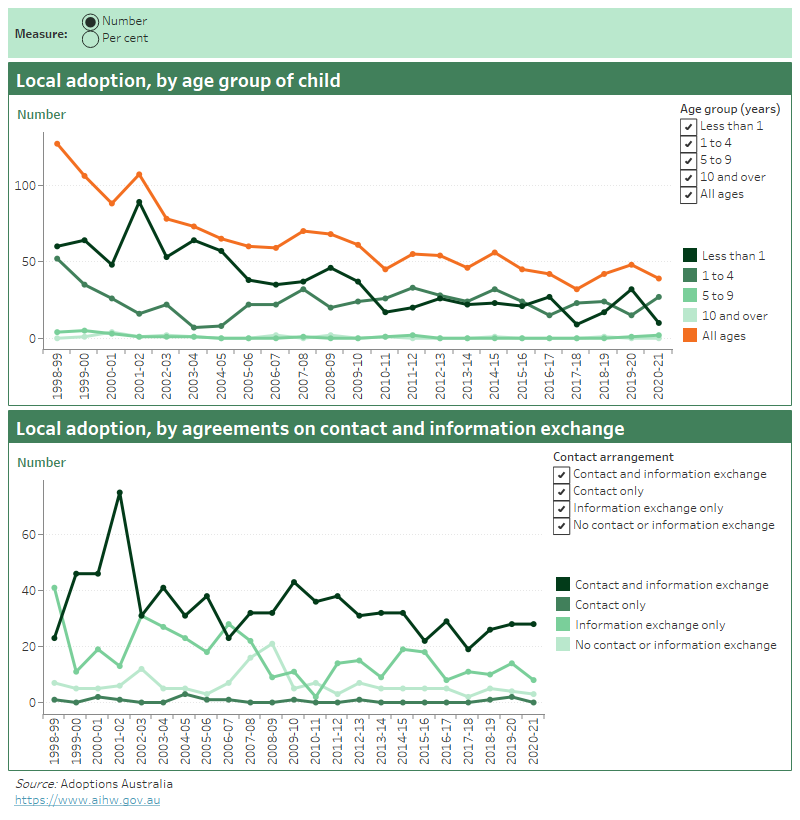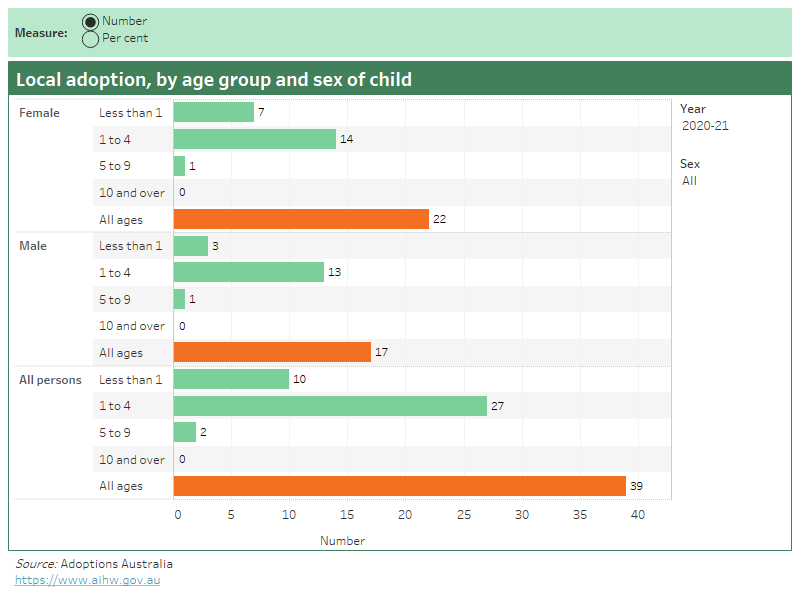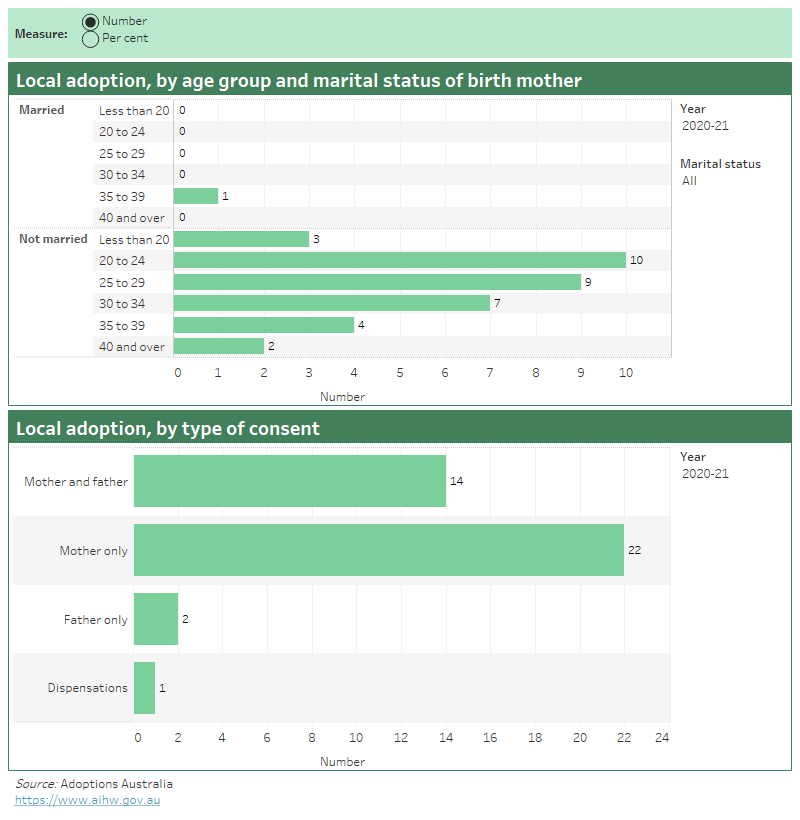Local adoption in Australia
Local adoption refers to the adoption of children born or permanently residing in Australia before the adoption who are legally able to be placed for adoption, but generally have had no previous contact or relationship with the adoptive parent(s).
A simplified overview of the local adoptions process in Australia is presented in Figure 2.
Note: Processes might vary between jurisdictions.
Source: AIHW
A complex interplay of social, economic and legislative factors influence the number of children in need of adopting and the characteristics of families seeking to adopt. These include:
- increased acceptance and financial support for unwed mothers,
- reduced stigma around children born outside marriage,
- the end of forced adoption practices in Australia,
- the increasing labour force participation of women,
- improved contraception and legalised abortion, and
- increased postponement of having children, and reproductive innovations.
In general, children adopted through local adoption tend to be younger than those adopted through intercountry or known child adoptions.
Two panels presented. In the top panel, the number of local adoptees is shown, by year and by the age group of the adoptee, from 1998-99 to 2020-21. The most numerous age category up to 2009-10 was adoptees under 1 year of age, and since then it has fluctuated between under 1 and 1 to 4. In the bottom panel, the number of contact and information exchange arrangements for local adoptees is shown by year, from 1998-99 to 2020-21. Adoptions with both contact and information exchange has been the most numerous type of local adoption across the majority of this period.

Since the 1980s, Australian adoption laws that govern the way information about an adoption can be accessed have undergone substantial changes. The secrecy that surrounded past adoption practices in Australia has largely given way to a system focused principally on the needs of the child, and characterised by the open exchange of information. Access to the adopted child by parties to an adoption (referred to as an ‘open’ adoption) is facilitated in all states and territories, although the degree to which this occurs varies across the jurisdictions.
The plot shows the sex and age distribution of children adopted through local adoptions, by the year that the adoption order was finalised. For adoptions finalised in 2020-21, children aged 1 to 4 were the most numerous category for both males and females, followed by children aged less than one. More adoptees of females were finalised than males (22 compared with 17).

Birth mothers and access to information
The birth mothers of adopted children tend to be younger than Australian mothers in the general population, and tend to be unmarried when the child was born. The marital status of these mothers is likely to be influenced by several factors, including the age at which they give birth to the child, as well as the trends of decreasing registered marriages and increasing de facto relationships in the general population.
Consent from both parents is generally required for an adoption order to be granted. However, a court may declare that the consent of a parent is not required. Grounds for dispensation applications vary under the legislation of each state and territory. In some jurisdictions the consent of the birth father is not required when his identity is unknown, making it unnecessary to dispense with his consent.
Two panels are presented. In the top panel, the age distribution is shown for mothers of children adopted through local adoptions, disaggregated by their marital status and by year. For local adoptions finalised in 2020-21, all but one mother was unmarried at the time the child was born, and for unmarried mothers the most numerous age group was 20 to 24 (10 mothers). In the bottom panel, the type of consent given for local adoptions is shown by year. The majority of adoptions finalised in 2020-21 had consent from the birth mother only (22 adoptions), with the next most numerous type being from both the birth mother and father (14 adoptions).

Explanatory notes
Age is calculated from date of birth, in completed years. For local adoptions, it is the age at which the child was placed with the adoptive family.
The mother’s age is her age in completed years at the date of birth of the child.
Where the data indicate ‘Mother only’ or ‘Father only’, the other parent’s consent was either dispensed with or not required. Where the data indicate ‘dispensations’, both parents’ consent was either dispensed with or not required.


